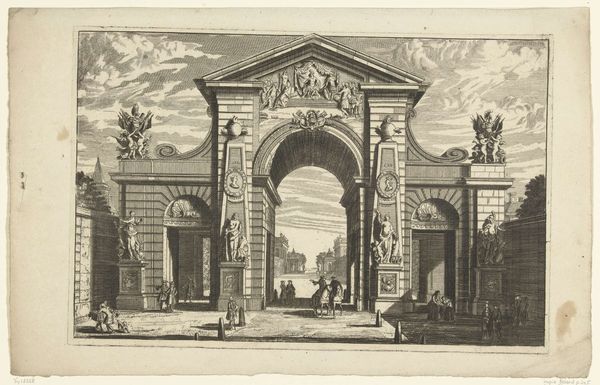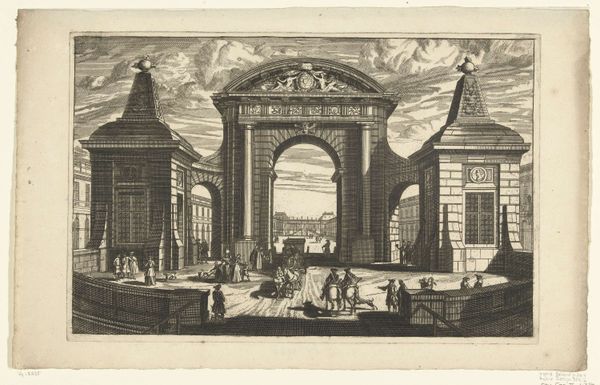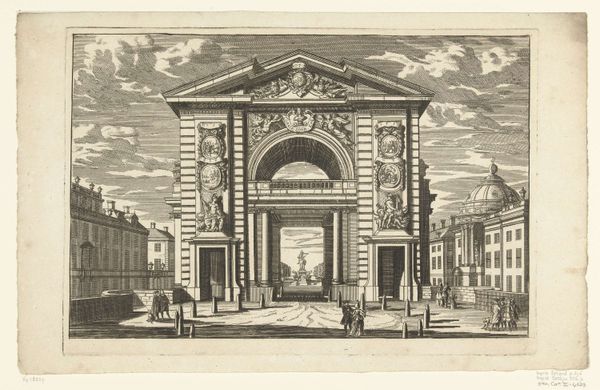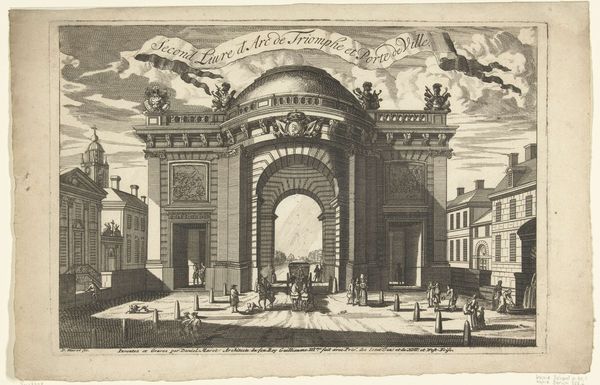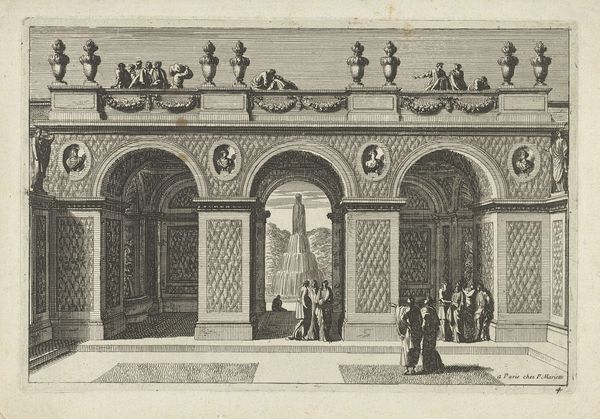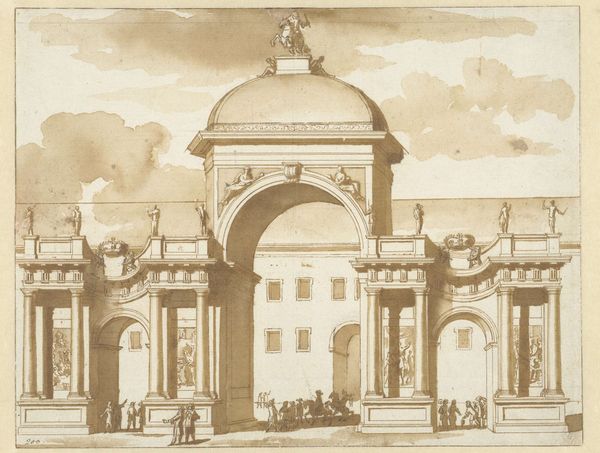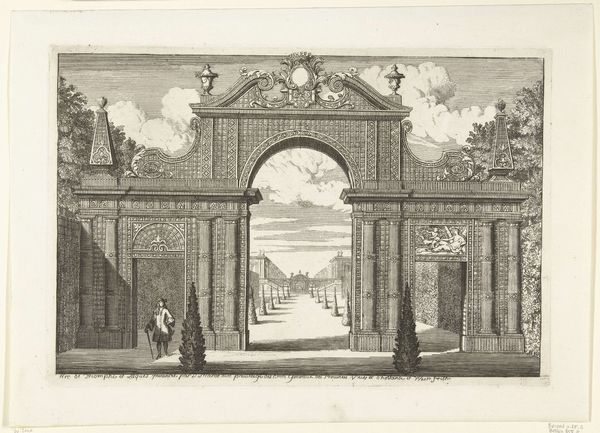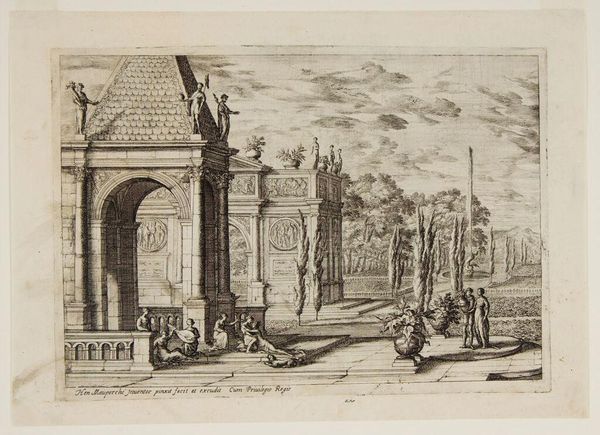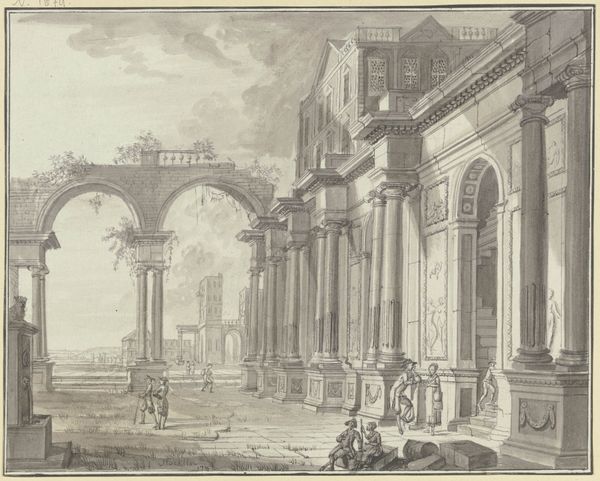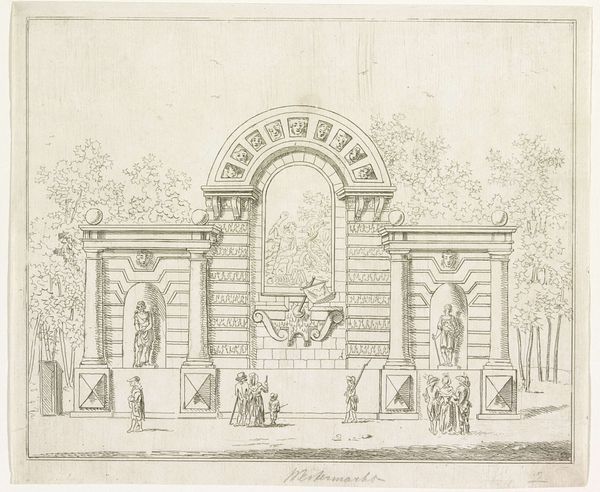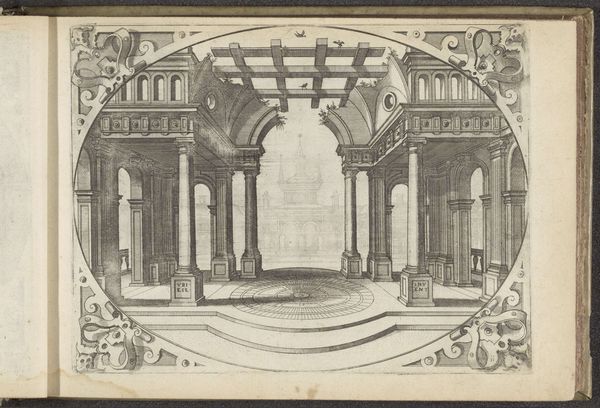
print, engraving, architecture
#
baroque
# print
#
geometric
#
line
#
cityscape
#
engraving
#
architecture
#
realism
Dimensions: height 188 mm, width 274 mm
Copyright: Rijks Museum: Open Domain
Editor: Here we have an engraving from the 17th century, "Stadspoort in de vorm van een triomfboog, met oculus," currently held at the Rijksmuseum and attributed to an anonymous artist. I’m immediately drawn to how grand yet sterile it feels – like a stage set rather than a real place. What catches your eye? Curator: The symbolism encoded within this cityscape truly fascinates me. Consider the triumphal arch itself. What memories does it evoke for you? It’s more than just architecture. Editor: Well, triumph, obviously! And power... but also maybe the fleeting nature of it all, given that it's just an archway. Curator: Exactly! Arches traditionally celebrated military victories or rulers. Notice the oculus at the top, featuring a figure on horseback, further reinforcing notions of authority. Now, think about how these symbols functioned in the 17th century. These images solidified existing hierarchies, subtly shaping public perception of leadership, divine right, and social order. The print, itself, became a carrier of the cultural and political status quo. Editor: So, the print isn’t just depicting a place, it’s actively promoting ideas about power. That’s incredible. Curator: Precisely. The cityscape, therefore, operates as a form of cultural memory, continuously reminding viewers of established societal structures through seemingly innocuous details. What emotional response do you feel toward it now? Editor: I see what you mean – there’s almost an oppressive feeling, like this grandeur isn’t meant for everyone. It's a potent reminder that even landscapes carry ideologies. Thank you! Curator: And thank you! Recognizing these layers enriches our experience with any work.
Comments
No comments
Be the first to comment and join the conversation on the ultimate creative platform.
